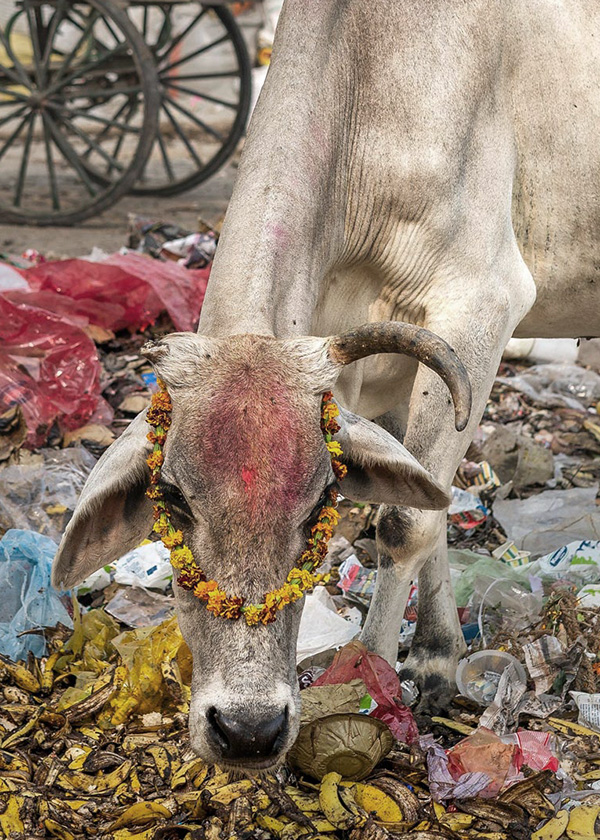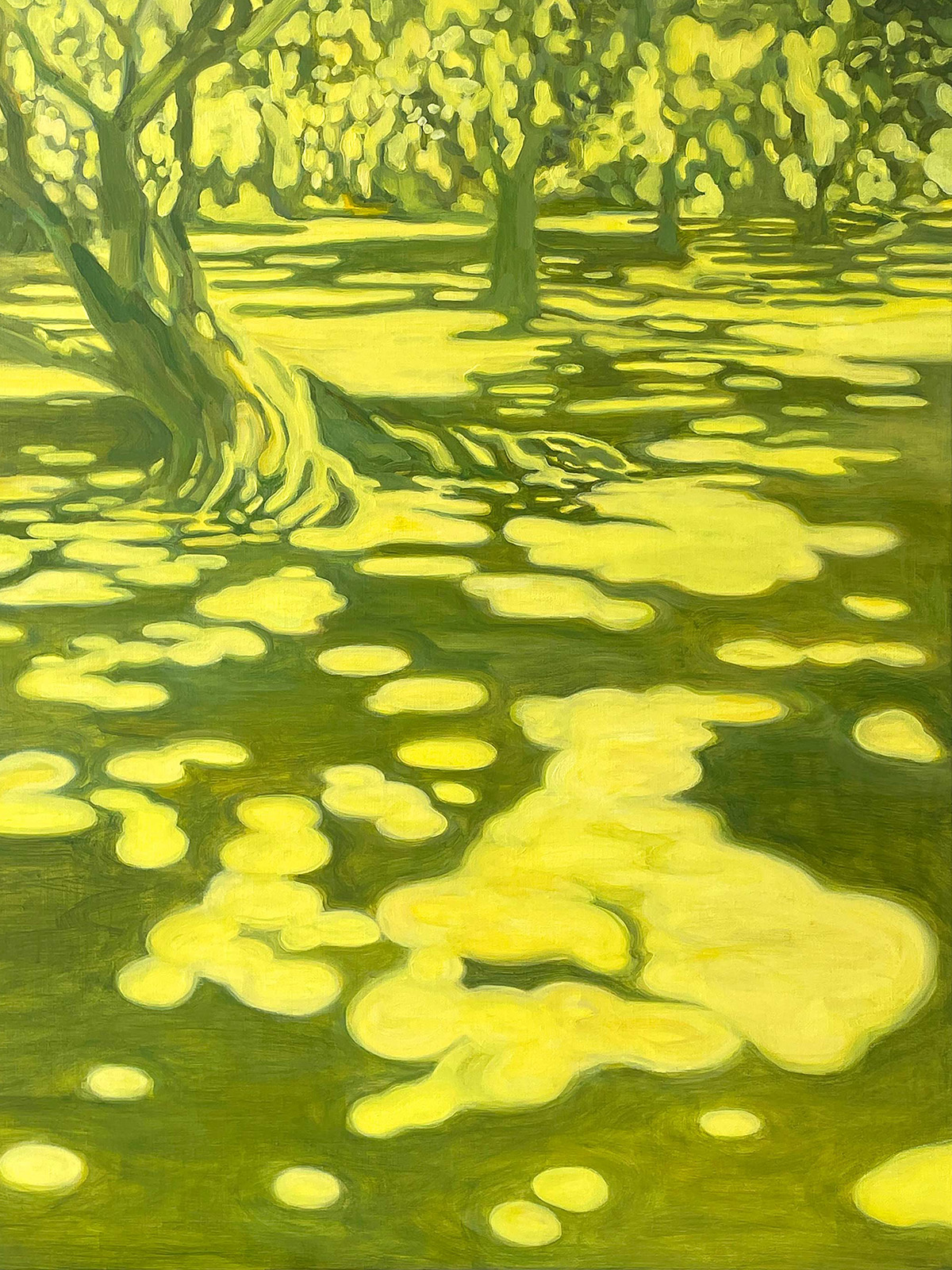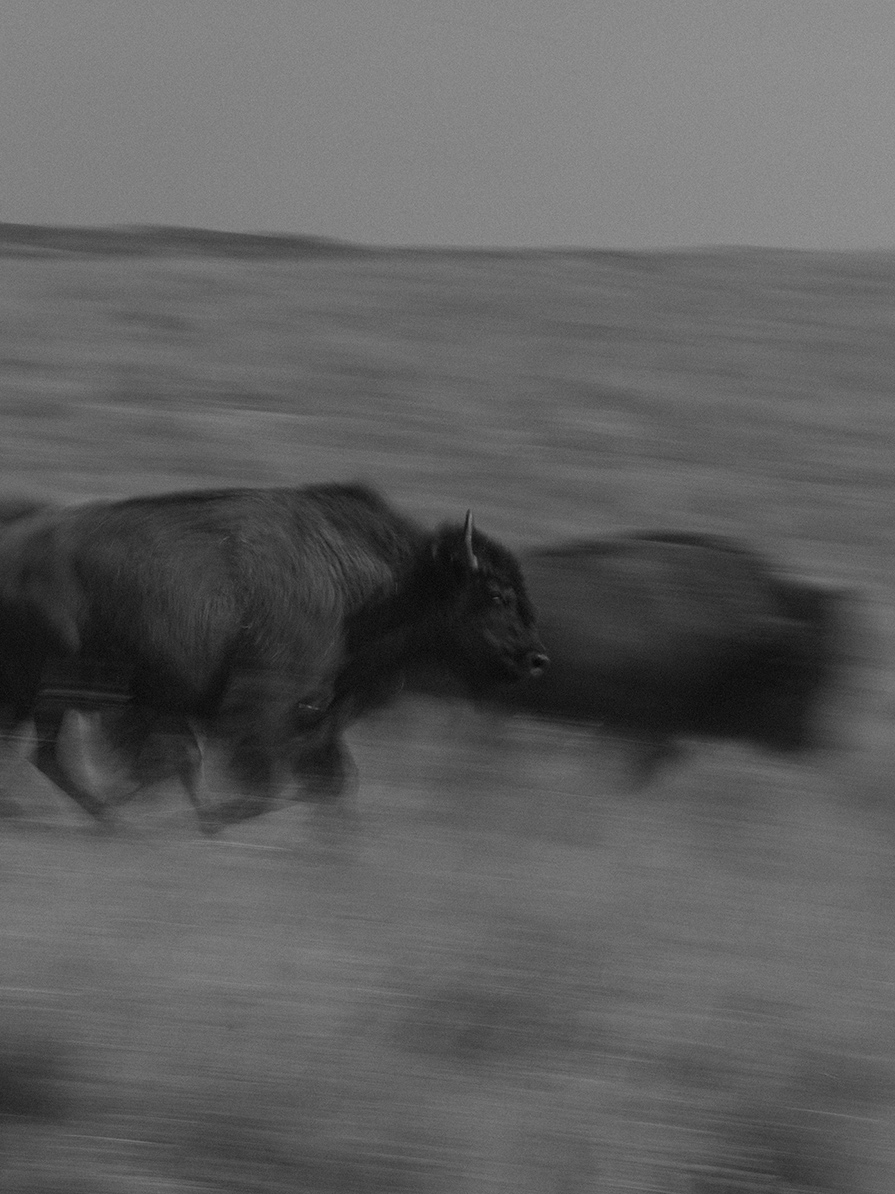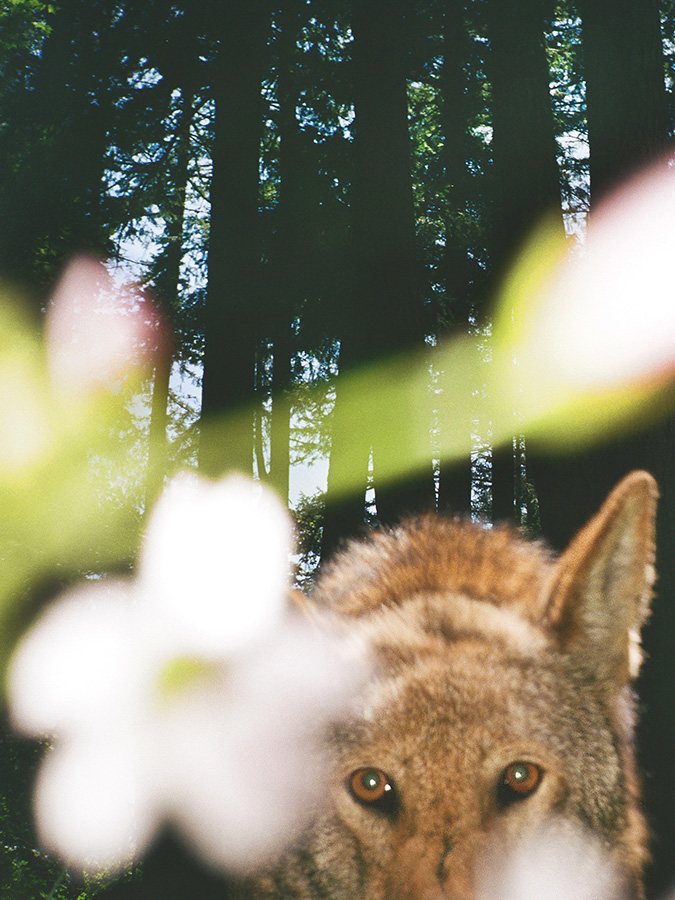
The Forest of Orchids
by Heather Swan
Photos by Felipe Villegas
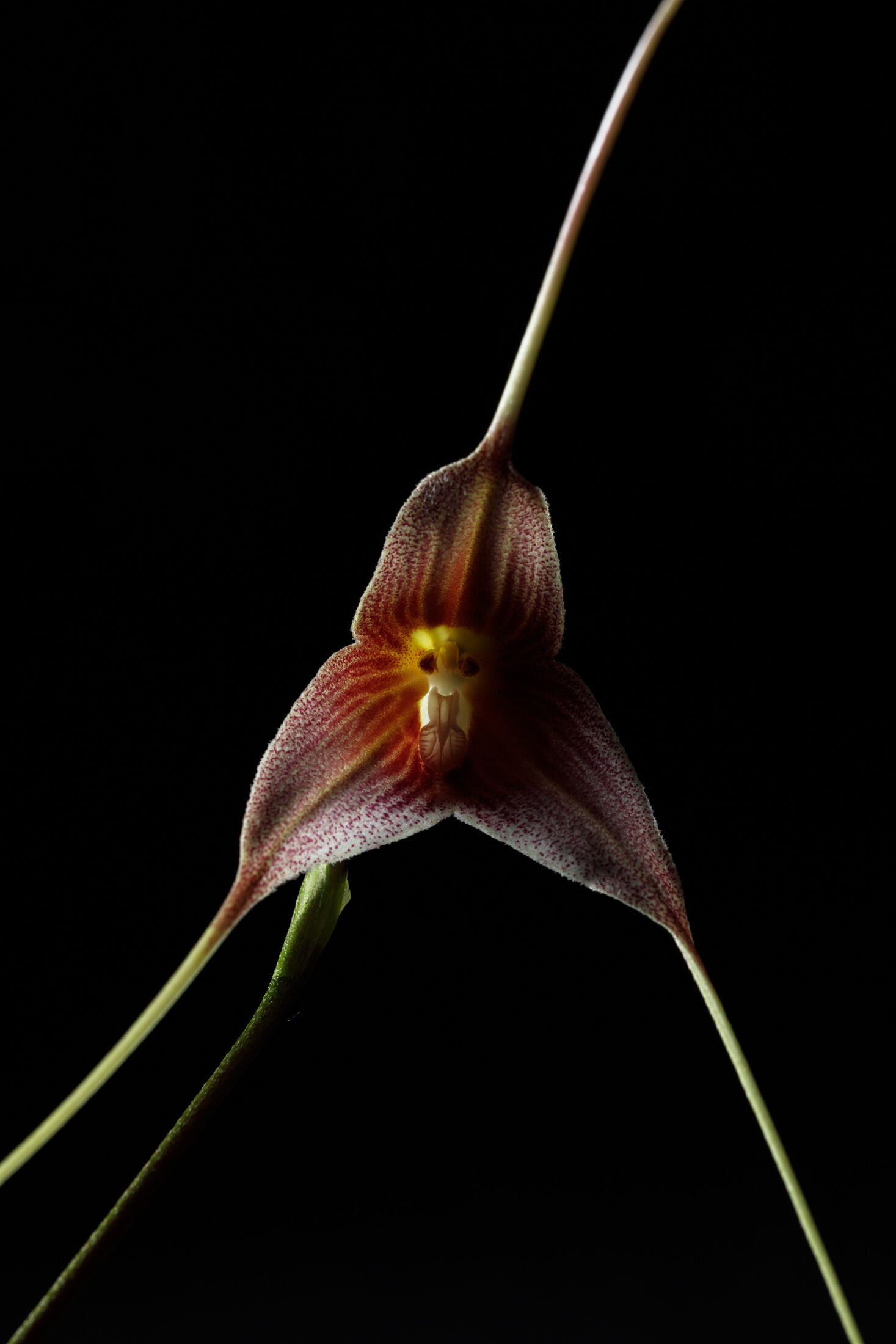
Dracula dalstroemii
Heather Swan is a poet, writer, and beekeeper. She is the author of Where Honeybees Thrive: Stories from the Field, winner of the 2017 Sigurd F. Olson Nature Writing Award. Her poetry has appeared in Cream City Review, Poet Lore, Iris, Basalt, and Green Humanities Review, and her nonfiction has appeared in ISLE, Resilience, Edge Effects, and Aeon. She is a lecturer at UW-Madison, where she teaches environmental literature and writing.
Felipe Villegas is a photographer, biologist, and visual communicator. He is the main expedition photographer for Colombia’s Alexander von Humboldt Biological Resources Research Institute. His work has appeared in the Toronto Star, La Patria, and PLOS ONE. His awards include First Place (Fauna) and Honorary Mention (Flora and Fungi) at the Concurso de Fotografía Ambiental Corpocaldas 2010.
As Colombia continues to suffer violence and unrest, one family seeks to change the country’s story from one of destruction to one of restoration and healing by planting thousands of native orchids across a mountainside.
To him who keeps an Orchis’ heart –
The swamps are pink with June.
—Emily Dickinson1
Hidden in the verdant mountain forests of Colombia, among trees threaded with the flights of tanagers, iridescent hummingbirds, and a vast array of butterflies and bees, are some of the most seductive, aromatic flowers in the world: cattleya orchids. Cattleyas are known for their alluring scents and voluptuous, colorful blossoms and are sought by orchid lovers around the world. At an international exhibition in 1936, Colombians presented a Cattleya trianae––named after the Colombian naturalist José Jerónimo Triana––as a symbol of their country, and it has remained the national flower ever since. The country is home to over four thousand types of orchids, which have flourished there for centuries, but today, in part because of their popularity and in part because of environmental destruction, at least 50 percent of these native orchids are endangered.
I confess I had some fears when I landed in the mountain city of Bogotá on a misty October night. It was the fall of 2019, and I had traveled to this Andean city to meet a family of self-proclaimed orchid addicts. My images of this country had been shaped by both fact and fiction. To many people living in the United States, the mention of Colombia in the past few decades has conjured images of traffickers, guns, and suitcases full of cocaine under a thick canopy of trees—stories the media tends to highlight.
Although I had close Colombian friends, this was my first experience of this land. When I arrived, a cab took me through the busy streets of Bogotá to the neighborhood where I would be staying. The tips of the Andes––dark giants at the edges of the city––stood watch. This did not seem like a country that had suffered a violent, fifty-year war and complex problems from drug trafficking. In 2016, three years earlier, a peace accord had been signed, and the country was still trying to heal. Many Colombians, like the family I was headed to meet, were working to change their country’s story. I knew those mountains held much more than coca plantations and guerrilla fighters, though I admit I still felt some trepidation. However, that night I dreamt not of violence and bloodshed, but of forests, tangles of towering dark trees and flowering vines, singing with lyrical nonhuman voices.
The next morning, sunlight spilled over the mountains, illuminating the city. Shopkeepers and newspaper vendors readied for the day. Businessmen and women hustled across streets or hailed cabs. Buses rumbled past. Flower stalls flaunting their colorful wares in tall silver buckets brightened the street corners.
Colombia is the second largest flower exporter in the world. Often the roses we buy for our sweethearts on Valentine’s Day in the US have traveled from the greenhouses outside of Bogotá to our supermarkets. Flower exports bring approximately $1.5 billion to Colombia annually, and about 75 percent of those flowers are sold in the United States.
But the vast majority of these cultivated flowers are grown with chemical fertilizers—a method which is not helping preserve or restore Colombia’s biodiversity. Like other industrial scale, single-crop models dependent on pesticides and fertilizers, these flower farms have devastated soil health, insect health, and ecosystem health. I had come to Colombia to learn about a different means of flower cultivation, one being carried out on a granular, species-specific scale on a rural mountainside. I had come to meet María Luisa Hincapié and her family, and to learn about their project: the Forest of Orchids.
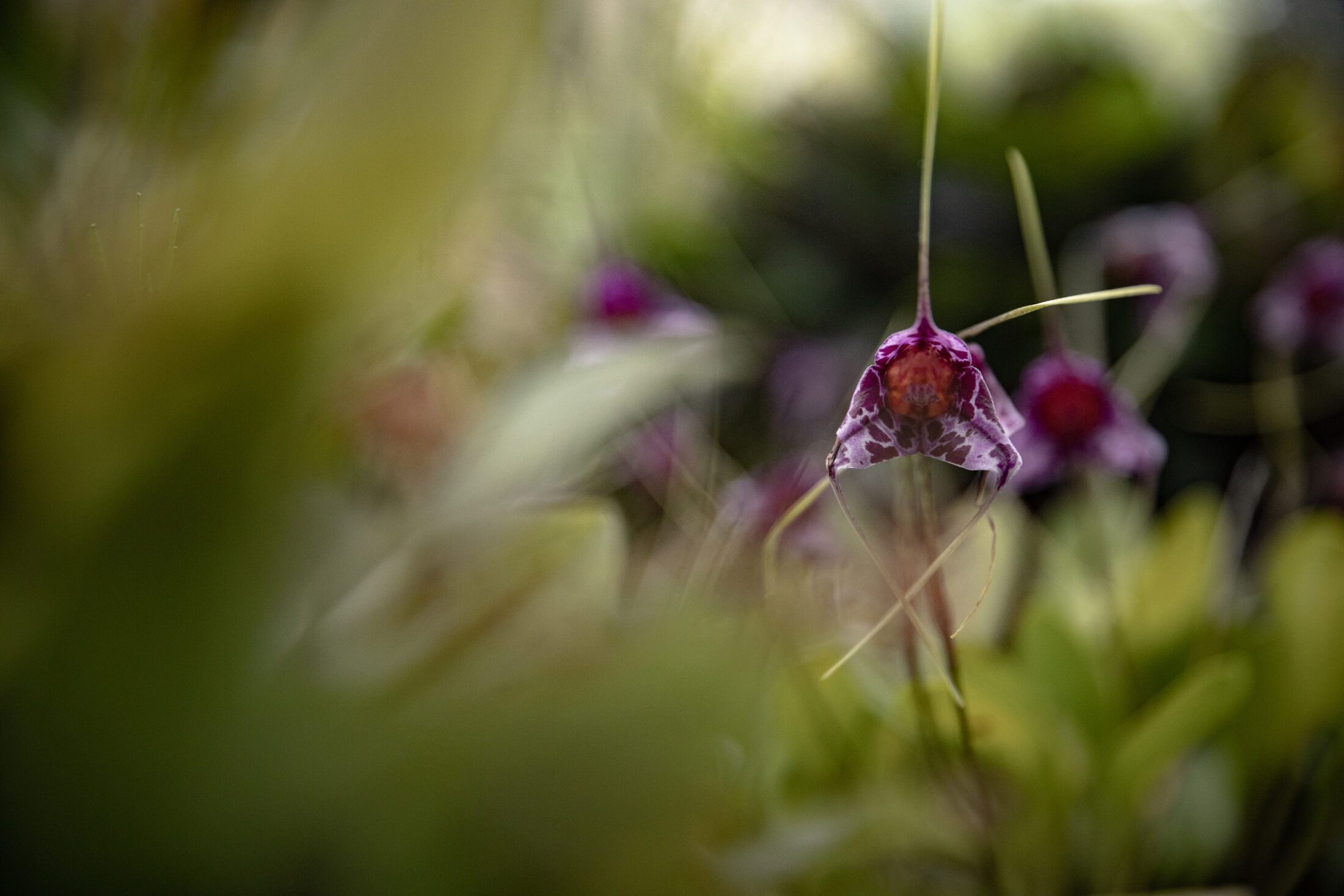
Masdevallia chaparensis
Colombia holds the distinction of being one of the most biodiverse countries in the world, with five biogeographical regions, nearly two thousand types of birds, 20 percent of the world’s butterflies, and numerous species of jewel-like frogs. Many of these species are endemic—belonging to unique, highly specialized ecosystems—but deforestation, mining, the disappearance of pollinators, and illegal trafficking are destroying these fecund spaces.
María Luisa, her husband, Luis Carlos, and their daughters, Mar and Sol, had embarked on a journey to protect one small corner of this fragile world by restoring a mountain landscape that supports native orchids and their pollinators. María Luisa was familiar with my book Where Honeybees Thrive, as well as with some of my other writing about the relationships between insects and plants, and had invited me to visit so that she could show me her orchids and her land.
Orchids have captured the attention of humans for centuries. The extraordinary plants are known for their intricate blossoms, arresting scents, and bright colors. Many of those found in the mountains of Colombia are epiphytic––which means they attach themselves to trees and seem to miraculously live on air––but the orchid family is so broad and diverse that you can find orchids in deserts, on grasslands, in the chilly climates of Canada and Siberia, and even living underground. Their flowers have invited many interpretations. The most familiar blossoms––with their colorful petals and distinctive lip opening to a deep cup––resemble the female anatomy. But the word “orchid,” or “orchis,” according to the Oxford Dictionary, comes from “modern Latin, based on Greek orkhis, literally ‘testicle’ (with reference to the shape of its tuber).” In the 1842 edition of The Lady’s Book of Flowers and Poetry: To Which Are Added a Botanical Introduction, a Complete Floral Dictionary and a Chapter on Plants in Rooms, Lisa Hooper explains: “The Greeks named this plant Orchis, from the form of the roots in many of the species…. In addition to the Greek name, the Latins often call it Satyrion, because the early Romans believed it to be the food of the Satyrs, and that it excited them to the excesses which in fabulous history are ascribed to them.” Even today, orchids are thought to be powerful aphrodisiacs.
The flowers are more than our erotic interpretations of them, however. Vanilla orchids give us an unmistakable vanilla flavor integral to so many of our cookies, cakes, and pastries. A research center at the University of Washington in Seattle claims that some orchids “are made into a remedy for sick elephants in Malaysia and a kind of ice cream in Turkey … said to prevent cholera, heal the spleen, and ease childbirth.” According to China Daily, “Ancient Chinese called eternal friendship ‘Ian jiao,’ or companionship as nobel [sic] as the orchid, and beautiful prose and poems ‘Ian zhang,’ or words as graceful as the orchid.” Some of these flowering plants can live up to one hundred years and their cultivation has been practiced for centuries. The Japanese poet Izumi Shikibu, from the Heian court of ancient Japan, wrote:
As I dig for wild orchids
in the autumn fields,
it is the deeply-bedded root
that I desire,
not the flower.2
In Victorian England, an obsession with orchids, especially rare ones from colonized lands, led to an enterprise of feverish and illegal extraction—one of many imperialist ventures of the time. In Orchid Fever: A Horticultural Tale of Love, Lust, and Lunacy, author Eric Hansen recounts tales of incredibly intrepid and obsessive orchid collectors, tales which end in fights and sometimes death. Even today, precious or rare orchids fetch fantastic prices. A single Shenzhen Nongke orchid, developed in China, can cost an orchid collector $202,000. High prices make the illegal removal of native orchids tempting despite the danger of obtaining them. The value of illegal native orchid trafficking globally is estimated to be $6 billion annually.
When I traveled to meet María Luisa, I admit, I knew little about orchids other than that they were exquisite flowering plants that required special pollinators, each variety attracting a different bee or wasp or moth or butterfly to pollinate it, and I wanted to learn more about this.

Main house at Forest of Orchids reserve.

Orchids hanging in the greenhouse.
María Luisa spent countless hours of her childhood outside. The natural world was her playground. She loves telling the story of when she and her cousins befriended an alligator hatchling, which she kept under her bed at night until they realized that wild animals should be allowed to live in their own habitats, not in the possession of a human being. But it continued to visit them, sometimes knocking its head against her door to get her attention, even after she’d returned it to its home. This experience has stayed with her and informs her respect for the land and its creatures to this day.
I never had a pet reptile, but when I was eight, I fell in love with honeybees. My father took me to a honey harvest at a friend’s small apiary. The sweet perfume of honey and wax filled the air as bees floated around the gentle beekeeper. He took only the excess honey, leaving enough for the bees to survive the winter. The relationship I saw between bees and beekeeper seemed mysterious to me. I dreamt of one day keeping bees myself, and when a young woman, I got my first hive. I never had any interest in selling honey or renting out the bees for pollination services. I simply loved watching them nuzzling flowers, dancing their maps to one another in the hive, stroking each other with their antennae. I admired the fact that their way of life was truly one of reciprocity. They took nectar from the flowers but pollinated them in return. They lived so gently in their communities.
Honeybees are the gateway bug, my mother often says. You can capture someone’s attention with the honeybee and then open them to the miracle of all the other insects. My interest in honeybees led me to research native bees, dragonflies, moths, crickets, and eventually, the astonishing array of creatures that pollinate orchids. The insect world and all of its connections to landscape became my obsession. But as my awareness and awe was expanded, I simultaneously grew more alarmed. Many pollinators and other insects were seeing rapid decline.
In the fall of 2017, a study published in PLOS ONE by Caspar A. Hallmann et al. reported a loss of 76 percent of flying insects across Germany over a twenty-seven-year period. In 2019, another study, published in Biological Conservation and incorporating the historical data from seventy-three sources worldwide, concluded that 40 percent of insect populations were showing rapid decline and might be facing extinction. Among the insects mentioned are butterflies, bees, dung beetles, and dragonflies.
A recent PNAS report called Insect Decline in the Anthropocene: Death by a Thousand Cuts, which references over eighty other papers from around the globe, notes that insects are crucial for more than just pollination; they are also important as food for other species in complex food webs, as consumers of smaller insects that can threaten human quality of life, and as agents in “the macrodecomposition of leaves and wood and removal of dung and carrion, which contribute to nutrient cycling, soil formation, and water purification.” “Clearly, severe insect declines can potentially have global ecological and economic consequences,” the authors conclude. The report also states that “the principal stressors underlying insect declines—land-use change (especially deforestation), climate change, agriculture, introduced species, nitrification, and pollution—are those also affecting other organisms. Locally and regionally, insects are challenged by additional stressors, such as insecticides, herbicides, urbanization, and light pollution.”
Reports like these continue to prove that many insects are in trouble. What does this mean for our world? In Charles Darwin’s On the Origin of Species, he wrote about the abundance of red clover in a certain region of England which was pollinated solely by bumblebees as an example of the interconnected relationship between species. The clover was abundant there because the bees were abundant. And the bees, in turn, were dependent on the presence of cats, who devoured the mice who disrupted the nests of bees. This astonishing example of interconnection made me think of all of those missing insects. The intricate web of life was being radically disrupted. What else would go missing in connection to this loss? How could we shift this trend? I began looking for strategies, for stories of recovery, for humans with reverence for the nonhuman world. It was this quest that led me to María Luisa.
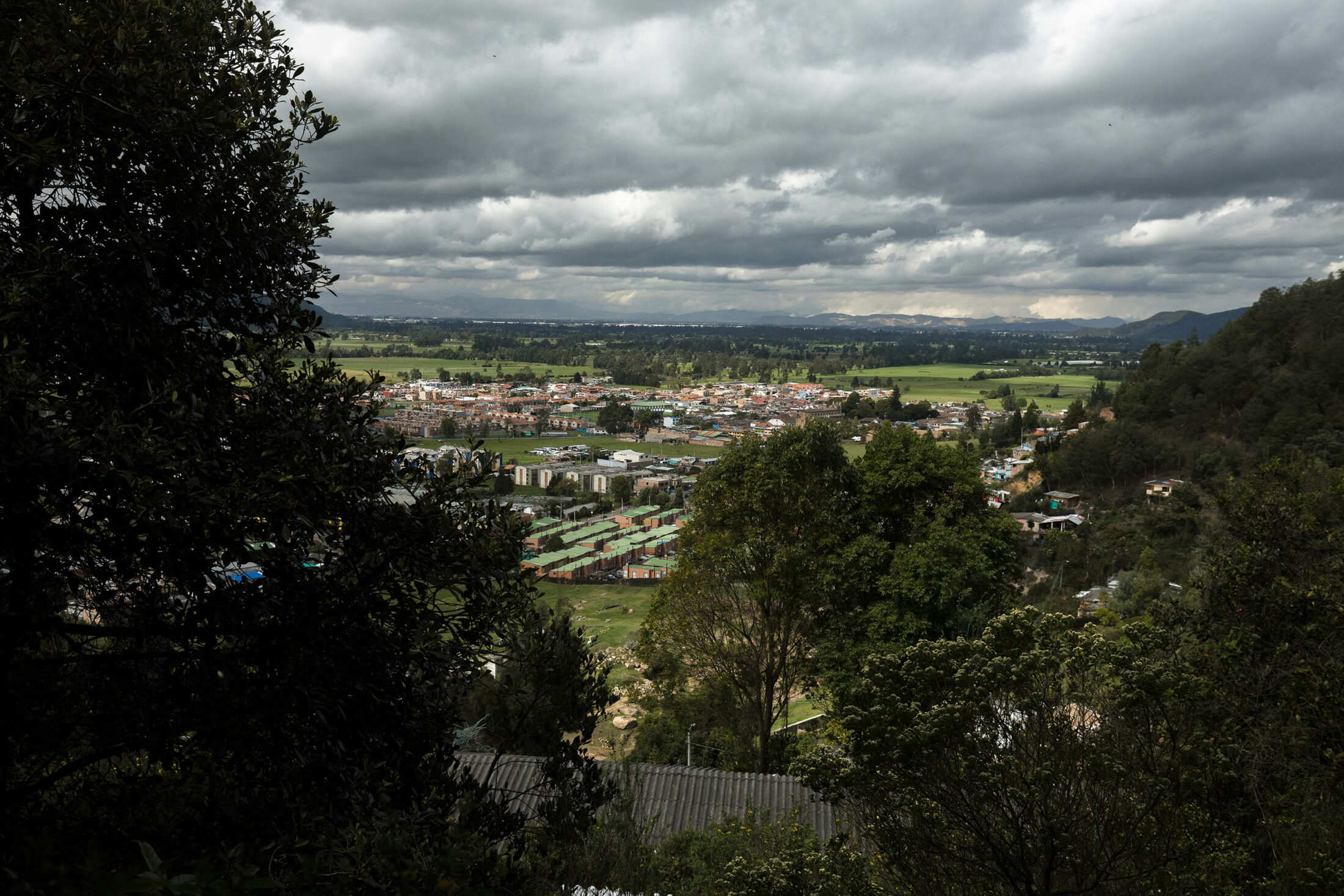
Tenjo, Cundinamarca
To get to the Forest of Orchids nature reserve and lodge, I drove from the sprawling city of Bogotá out to a small town called Tenjo. As I left the urban area, valleys opened out into pastures and fields. I eventually arrived in a town nestled against one of the surrounding mountains. I navigated through the narrow streets of Tenjo to the edge of a dramatic rocky incline. Though the GPS indicated I had arrived, there was nothing that looked like a lodge in sight. There was, however, an incredibly steep, muddy road that disappeared around a bend. I decided to get out and walk. A few small dogs swarmed around me, barking loudly, as I came to a tin-roofed house perched on the side of the mountain. A young girl hanging shirts on a clothesline in an open-air kitchen paused to call them off. I asked about the reserve, and she pointed straight up. A gate “a la derecha … no lejos,” she said.
It was a steep incline. As the road leveled out slightly, a large German shepherd rushed toward me, scolding me with a ferocious bark for approaching the gate. A second one from inside the enclosure began barking, too. From somewhere inside the gate came a melodic female voice calling to the dogs in Spanish. Then I heard, “Adelante, come in!” I had arrived at the reserve. A wide, radiant smile flashed under María Luisa’s high cheekbones as she opened the gate for me. Her dark eyes appeared both fierce and full of love.
When María Luisa’s family bought the land in 2001, it had been scraped clean of any vegetation. The was soil dry and impoverished due to overgrazing. Since then, her family has done the work of restoring the native vegetation of the mountainside by planting a native orchid reserve—part of their shared vision to change the story of Colombia from one of violence and destruction to one of restoration and healing. With orchids.
Beyond her verdant hillside, María Luisa’s country was recovering from more than overgrazing and the illegal native orchid trade. Colombians were trying to heal from the long civil war that began in 1964 and continued until 2016, when a tentative peace accord was finally signed between FARC (Revolutionary Armed Forces of Colombia) and the government. The conflict involved asymmetric warfare in which the government fought not just left-wing guerrilla groups such as FARC but also right-wing paramilitary groups, in addition to drug cartels and other organized crime. Throughout those decades, several violent factions struggled for power—a struggle that was intensified by the booming demand for cocaine within the United States—and civilian life was shrouded in a veil of fear. Estimates suggest over 220,000 people were killed during this time. Civilians were caught in cross fire that rang out daily in urban neighborhoods, bombs were placed in cafes and nightclubs, public figures were kidnapped. And rural towns were not immune from the violence. Frequently one armed group or another would overtake a small farming community and force residents to support a specific group or plant coca for the drug trade. Although there are signs of change, fragility of life is a fact many Colombians seem to know deeply and intimately.

In vitro culture of native orchids.
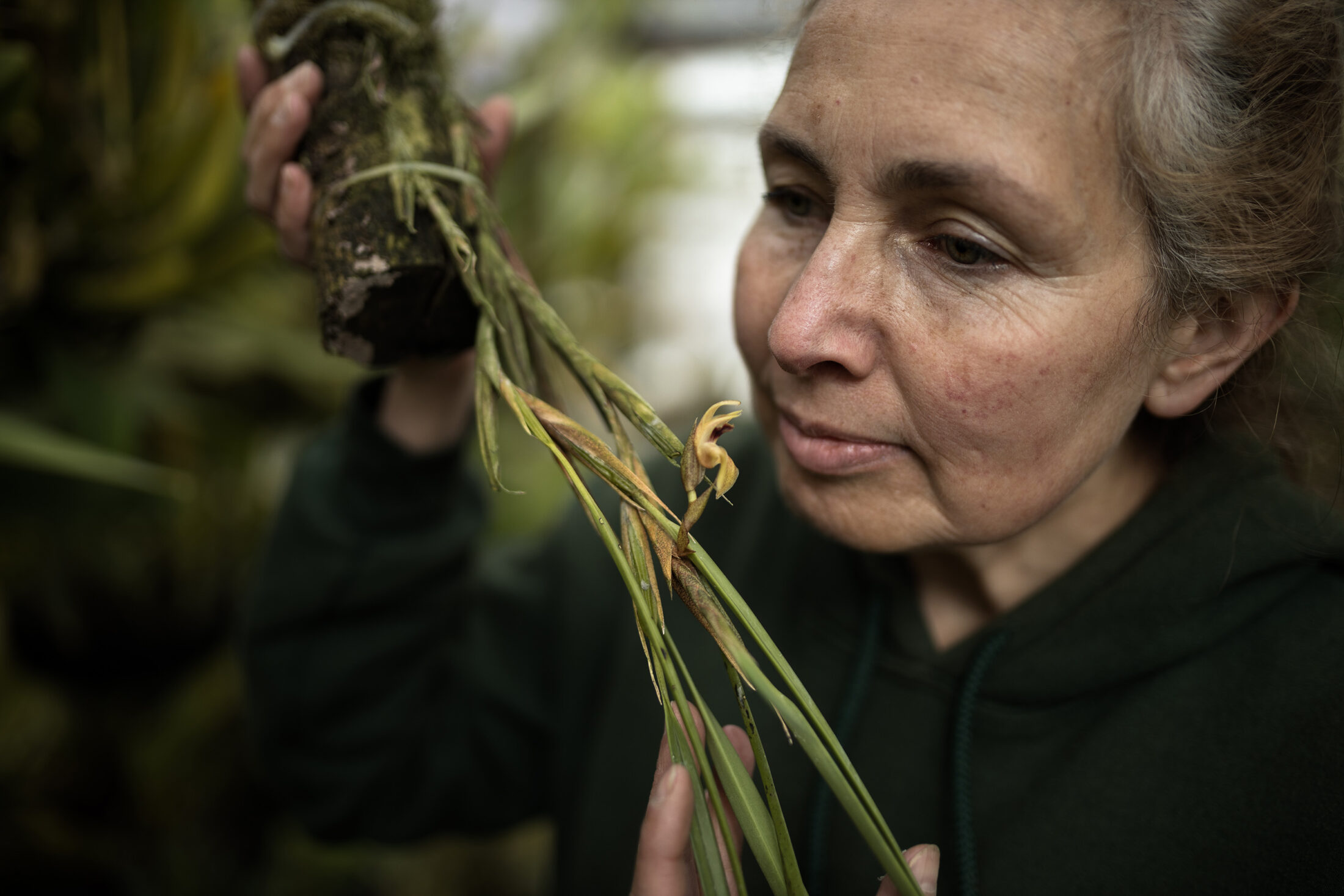
María Luisa taking in the scent of Maxillaria marialuisae, a species described by her husband and named in her honor.
The light was fading fast at the Forest of Orchids reserve, so María Luisa and her daughter, Mar, quickly ushered me out to see her orchids. The tinny sound of a loudspeaker from a small truck selling something in the town below was nearly drowned out by crickets and the calls of crepuscular birds. The dogs stayed nearby, as if to remind me not to make any wrong moves. As she led me farther up the steep, grass-covered paths, María Luisa explained that, though she and Luis Carlos had been spared the violence of the civil war on their land, the mountainside had experienced a different type of violence. When they purchased this property, she reminded me, it had been completely denuded. Many areas in Colombia had been stripped for mining or grazing or industrial agriculture. Environmental violence also plagued this country.
María paused in the late light and pointed to specific trees and bushes. “We planted all of this. There was nothing here but naked soil and rock.” I glanced up at the hillside, which was now covered with young trees, shrubs, and orchids.
She stopped in front of a wall covered in plants with leaves of many shapes—long and thin, or short and thick—and no two had the same flowers. Each plant’s blossoms were unique. “Which are orchids?” she asked. I suspected the answer. “Todos,” she said. All of them. She told me there were approximately thirty-seven thousand species of orchids in the world.
María and her family planted the Forest of Orchids not only to renew the land where we were standing but also to save native Colombian orchids, many of which are in danger of extinction. The orchids of Colombia face a number of threats, one of the greatest being illegal orchid trafficking. One reporter from Bogotá quoted the police as saying that in 2017 over two thousand species of orchids had been recovered from smuggling operations. As habitat is destroyed, pollinators become scarce. As the diversity of insects decreases, so, too, does the diversity of orchids.
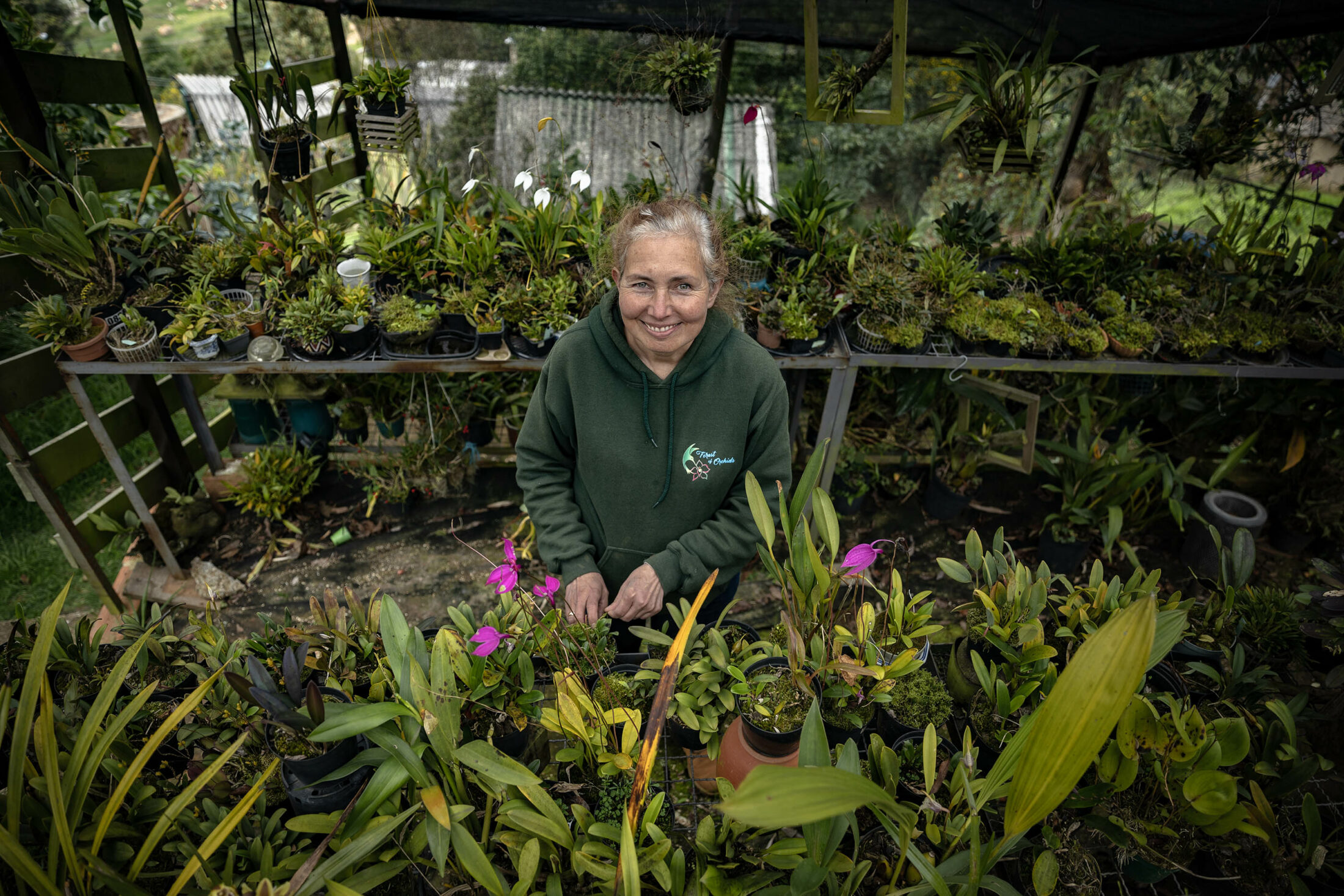
María Luisa working at the Forest of Orchids greenhouse.
The Forest of Orchids has four thousand species of orchids growing in its greenhouse and naturalized on the land. When researchers at the Natural History Museum of Paris decided they wanted to follow in the footsteps of nineteenth-century naturalist Alexander von Humboldt, a pioneer in ecological thinking, to discover whether the Colombian orchids he wrote about were still living in the same regions, the head of the project contacted María Luisa, Mar, and Luis Carlos to lead the expedition. The expedition took them deep into other parts of Colombia where they found some of the very flowers described by Humboldt. The reputation of María Luisa and her family as orchid experts and conservationists continues to grow internationally.
But their work faces serious obstacles. Orchid thieves are not all they have to worry about. In a recent article in Edge Effects, the environmental scholar Rob Nixon illuminated the great danger of being an environmental defender: “In the 245 weeks since the 2015 Paris Climate Agreement was signed, an average of four environmental defenders have been murdered each week.” Colombia, specifically, is listed as among the most dangerous places in the world for environmental activists. In 2019, sixty-four Colombian land defenders were killed because of their work.
We walked farther up the hillside, where María Luisa reached into a tree and stroked the long leaf strands of an orchid, explaining how she attached them to host trees. The orchid did not need soil but could obtain the nutrients it required from the air around it. At first there were few insects at all, she said; but as they planted new plants and let some fallen pine trees decay, beetles began to return and restore the soil. Fungi began to do their magical work of nutritional networking as the mycelium mingled with the many roots. The renewed fertility of the soil allowed windblown seeds to find purchase, and so the natural cycles of the mountain began to return.
In Andrea Wulf’s biography of Humboldt, she summed up his observations on biodiversity with this: “Nature’s balance was created by diversity which might in turn be taken as a blueprint for political and moral truth. Everything, from the most unassuming moss or insect to elephants or towering oak trees, had its role, and together they made the whole. Humankind was just one small part.”
Over the course of nearly two decades, the slopes of María’s mountain transformed. Butterflies had returned. Bees had returned. Now, she said, birds, frogs, and mammals were returning to the mountain as well. She pointed to some low shrubs. These were native volunteers, she explained, smiling. “And now people come to see them.” I paused to take in the life pulsing around us—María Luisa and Mar appeared both lithe and almost otherworldly in this light, standing on this verdant land that had once been dead. They themselves seemed orchid-like, able to pull sustenance from the air around them.
The mountain was falling into shadow as we wound back down the incline toward the nursery: essentially a roof with fabric walls, and openings for insects to come and go. This building was home to all of the orchids the family had collected and were propagating in order to repopulate the mountainside. Inside, María Luisa leaned in close to the plants, caressing them and speaking quietly about the womb of the orchid, a small pouch that would thicken after pollination, and the most important part of the plant in her opinion.

Brassia antherotes

Cymbidium God Knows Herbie

Maxillaria marialuisae
“Orchids coevolved with insects, so they each have special traits,” Mar explained from the doorway, and then told a story about an orchid that lived by the sea that had evolved so closely with its specific environment that it developed a scent of rotting fish so it could attract the flies inhabiting that particular shore. Joe Meisel’s book, Orchids of Tropical America: An Introduction and Guide, illuminates dozens of strange orchid/pollinator relationships across different genera in the orchid family. Elleanthus, for example, have long, tubular deep-red or purple blossoms, which are a perfect vessel for the long beaks of hummingbirds, while Brassia have long, thin sepals that look very much like arachnid legs. The flowers are pollinated by large wasps called tarantula hawks, which hunt large spiders, stun them with their stingers, and drag them to their burrows, where they lay an egg on their bodies. The Brassia mimics the spider body, tricking the wasp into trying to sting the flower. During this action the wasp picks up pollen and carries it to the next flower.
María Luisa is not only amazed by their ingenious evolutionary distinctions but is also convinced that plants are intelligent in ways we do not understand. They “see and know different things,” she said. “They know much more than we do in some ways.” I asked her if this meant that she thought plants had consciousness. She gazed at me, measuring, and then nodded. “Yes, I think so. I talk to them; and they exude chemicals that can change us,” she said. She smiled like a person with a secret. I thought of the purported magic of cattleyas. María Luisa walked to a smaller plant. “Once a woman came to visit us after her husband had died a long and terrible death, and she spent time touching this particular orchid. The next day the plant withered and nearly died. But it came back.” María Luisa believed that it had absorbed her despair.
The idea that plants are sensing beings is not new. Many Indigenous Colombians, like the Wiwa of the Sierra Madres, believe that rivers and mountains are alive, that the animals and plants are family. These beliefs have existed for thousands of years.
Researchers like Suzanne Simard and Merlin Sheldrake have done extensive research on the mycorrhizal networks that connect plants. Hub trees can steer nutrients to their offspring. Some trees emit warning pheromones to nearby trees when they are attacked by a predator insect so that the neighboring trees can begin to emit an armor of tannins to repel the same insect. Trees even have electrical impulses they release when wounded. But are plants able to sense human energy? Can they help us heal? Inspire us to heal the Earth?
I believe bees, too, are sensing beings and that they have moods. They are so perceptive and sensitive with one another and seem to be able to read me as well. I’ve often sat for hours watching honeybees gently pollinate flowers, then return to their hive and dance maps to share the location of newly discovered nectar. Often they stop to caress each other’s faces or try to help another bee who is struggling, exhibiting what looks like love. The bees remind me that communities can live harmoniously with one another. I got into the habit of talking quietly to them at the hive and soon was whispering to native bees when I walked in the fields. But I also tried to listen.

María Luisa working with the orchids.
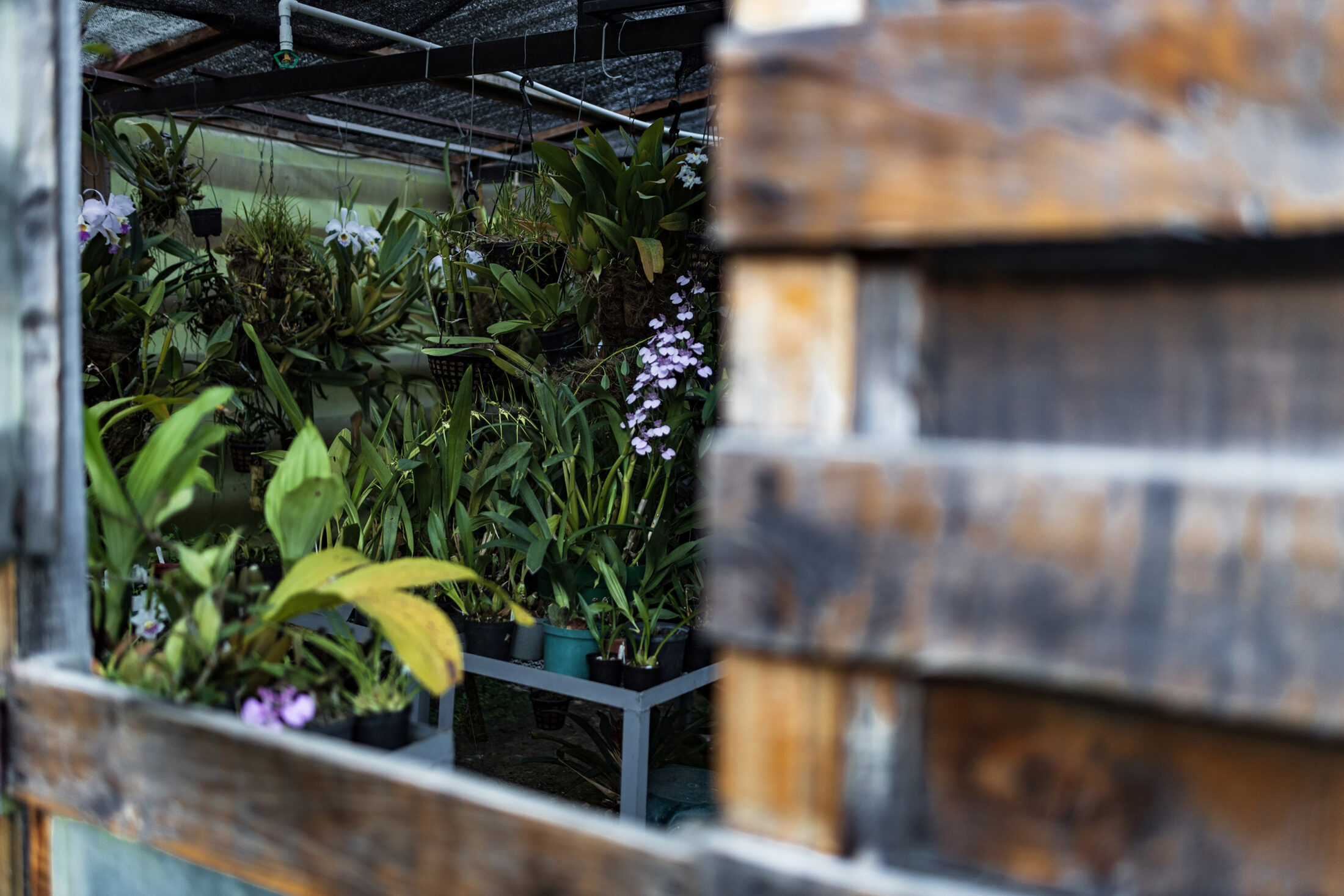
Warmer climate orchids growing inside a closed greenhouse.
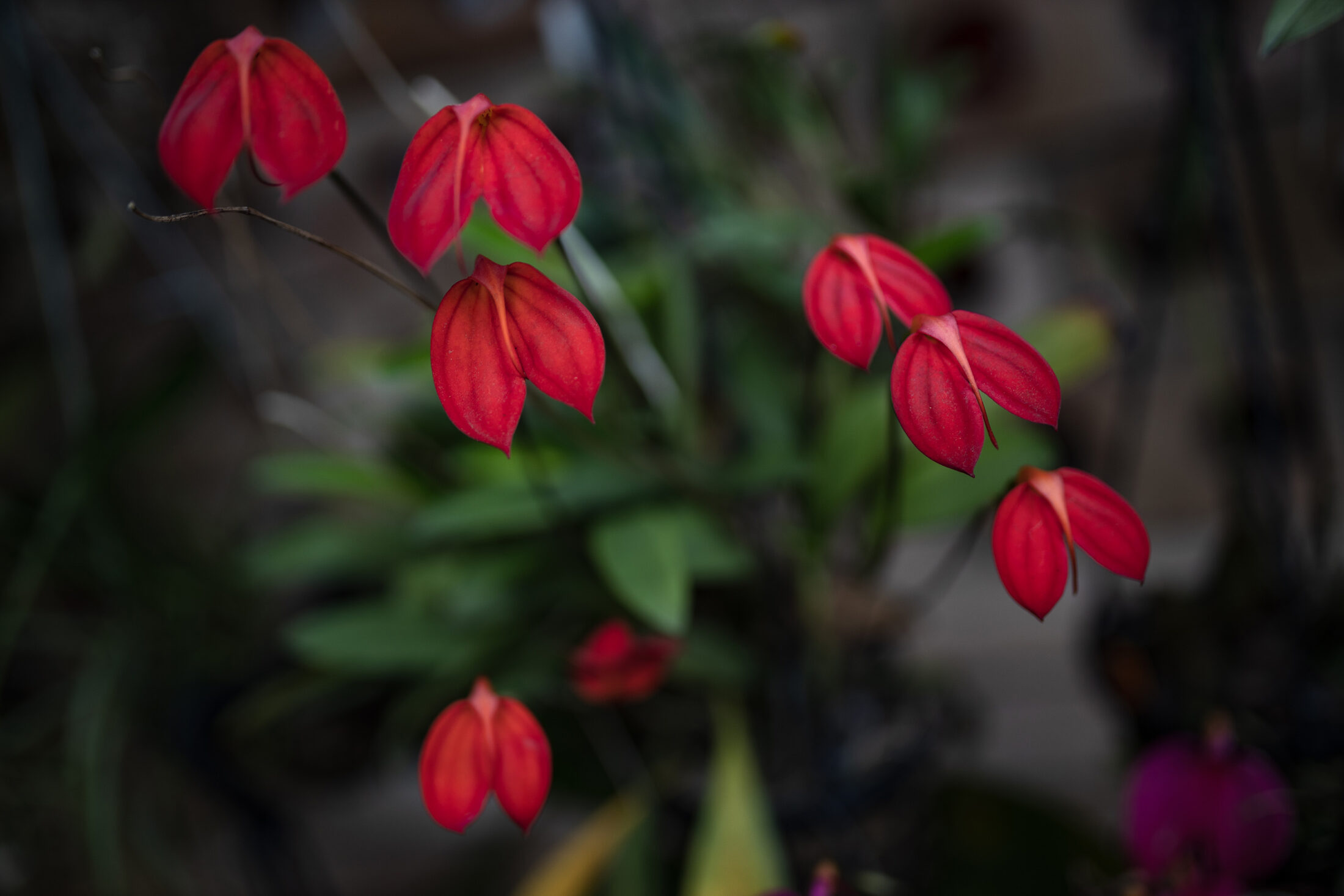
Masdevallia ignea
Inside the Hincapiés’ home, the three of us were joined by Luis Carlos. “It all started because of a birthday present of an orchid to my father,” Mar said. “And then the addiction began.” She was smiling. “Here is a special orchid,” Mar continued. “This one is named after my mother! Together we discovered a new species. This one is called Maxillaria maria-luisae.”
Luis Carlos’s love of orchids drove him to research them. He loved the science of orchids, which he had shared with his daughter. Mar took me over to a table where she had photos of the many types of birds, orchids, and bees they had seen on the land. Luis opened a book and showed me a photo of an orchid thought to be the last of its kind, an orchid they had on the property: the Ida Iionetii. They had found one—just one—growing on the mountain, when the vegetation was still sparse and recovering. Luis had identified it by its characteristic peach-colored petals and waxy leaves. Orchids can live a long time, scores of years, and so they waited, and finally, after the mountain had come to life again, the right pollinator arrived and “impregnated” the plant. Once it was pollinated they took the seeds and propagated them, saving this orchid from extinction.
Mar called me over to a table where she had placed a small collection of glass bottles, vials, powders and plants—a scene from a mad scientist’s laboratory. She explained the incredible patience it takes to grow orchids. Each seed is minuscule, like dust, capable of being carried by wind. Thousands of them are harvested from the “womb” of the flower and placed in one of these bottles with a very special type of algae that is required for them to germinate. The seedlings grow and then harden. This process can take up to two years! Eventually they are transferred to a new habitat, but that habitat has to have the perfect microclimate and the perfect pollination assistants.
Luis Carlos offered to demonstrate the pollination of an orchid that was blooming on their dinner table. “Sí, por favor,” I said, and everyone grew very quiet, solemn, and still. I realized that this was a sacred action. With one hand he lifted a white blossom and with the other he held a long, thin pipette. As he slowly moved the pipette into the open blossom, he whispered about the sexual organs of the flower. He pointed out a cap on the tip of a long shaft under which the pollen was hidden. Only by releasing this pollen could it reach the female parts of the flower at the base of the shaft. If an insect was too big or too small, it would not trigger this process. “The orchid would not get pregnant.” The room was quiet. He gently touched the flower and it sprang open.
“Incredible,” he uttered, staring at the flower like a man who had just seen an orchid for the first time. I had seen bumblebees resting in flowers, in what looked like ecstasy. I thought of a poem by R. Snow in Hooper’s Book of Flowers, which described the orchid bee:
Admire, as close the insect lies,
Its thin-wrought plume and honey’d thighs
Whilst on this flow’ret’s velvet breast,
It seems as though ’twere lull’d to rest…
Indeed Luis Carlos seemed lulled to rest.
“He is addicted,” his daughter whispered.
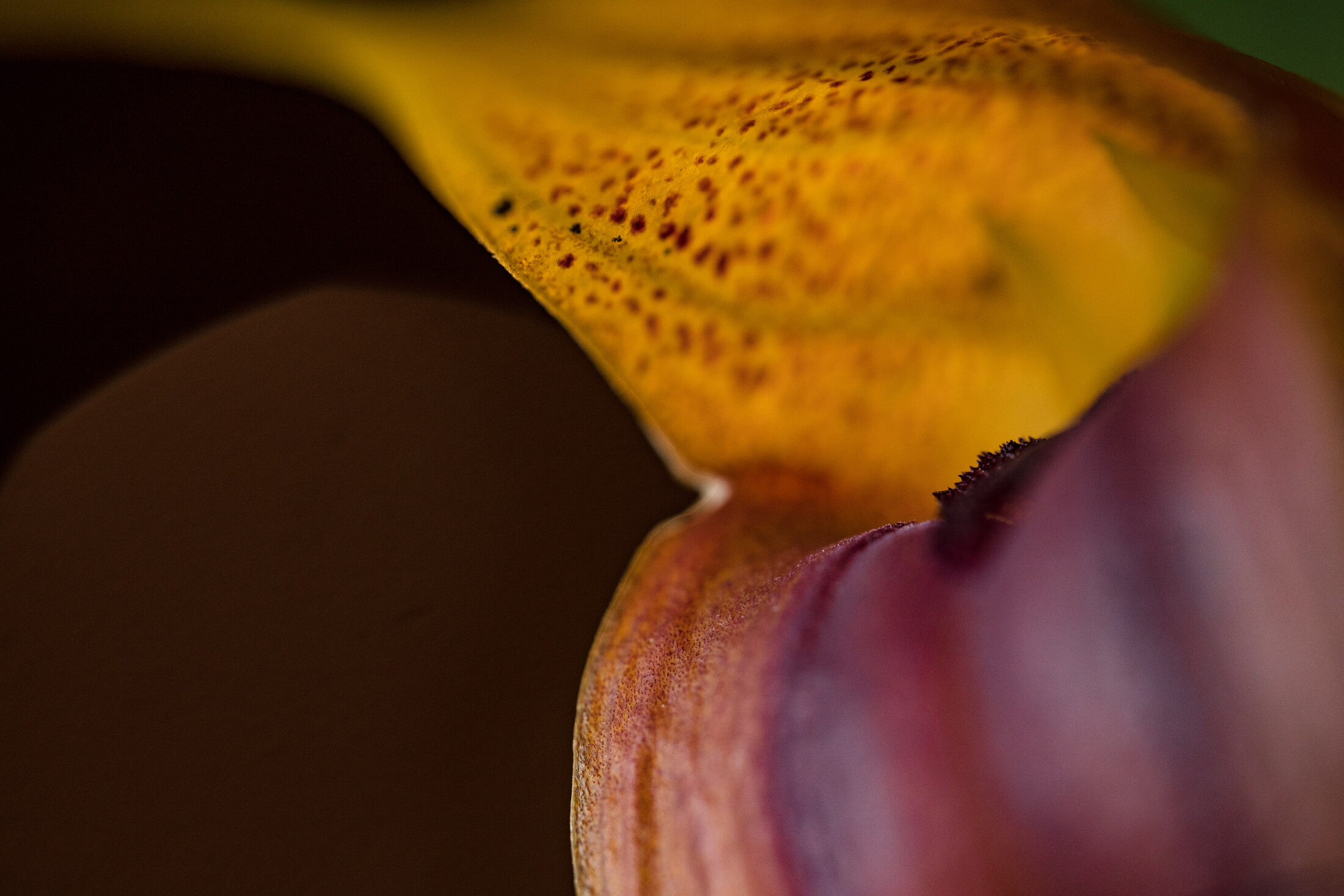
Detail of Masdevallia velifera.
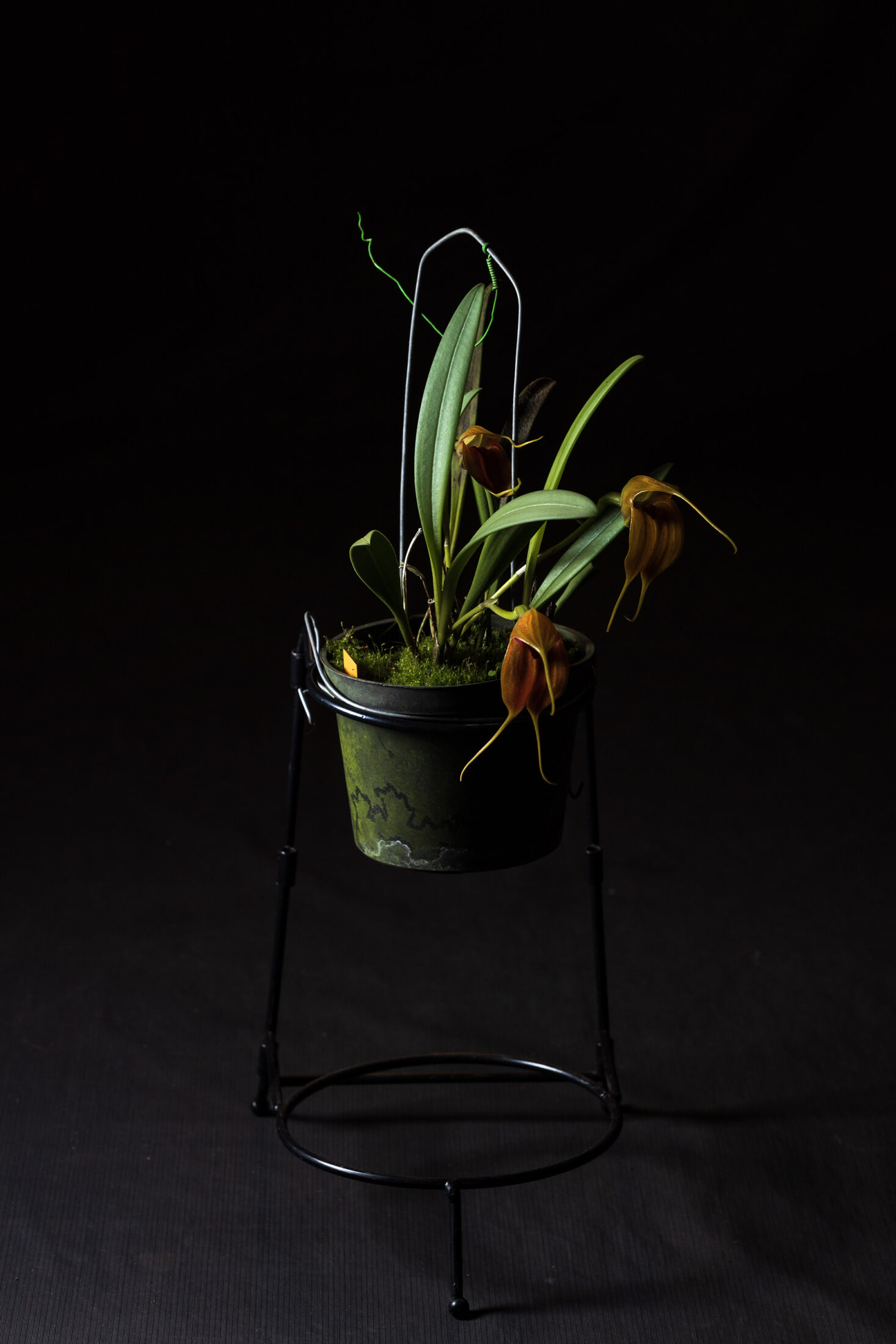
Masdevallia velifera
Caring for orchids and repopulating the forests has been a huge effort, but passion made it possible. The Hincapiés explained that it is part of a larger vision. When I asked Mar, the youngest among us, why she did this work, she said she felt called to protect the mountain; and more broadly to change the story of Colombia from one about war and drug lords, like Pablo Escobar, to one that shows another side of Colombia: the nature, the literature, the art. “Gabriel García Márquez wrote magical realism because it is magical here,” she asserted. Light seemed to be emanating from her body. “It takes a lot of love for the healing,” she said. “A lot of love.”
Late that night, as I descended the mountain, a light rain fell on the forest of orchids. As I made my way back to Bogotá, I thought about the noble endeavor of restoration in a country plagued by violence. Decades of unchecked terror could leave one immobilized by fear, disconnected. But María Luisa’s family had chosen to restore a mountain, which they believed could help change the story of Colombia and make a different future possible. María Luisa told me, “Nature teaches us about resilience, diversity, hope, second chances, and healing…. Starting with eroded land, transforming it into a small forest full of life, and being able to witness the return of many native species—as well as being able to live in harmony with other species—is something unique and wonderful.”
But there is no guarantee that the transformation they have helped bring about will endure. In February 2020, a wildfire burned through a part of the Forest of Orchids reserve and destroyed parts of the land that María Luisa and her family had worked hard to regenerate for eighteen years. When María Luisa told me about it, she said that already they were in the process of replanting. “Sometimes, when we feel like giving up,” she said, “an orchid that blooms for the first time or a hummingbird that flies around us gives us again hope.”
María Luisa’s critical work on the mountain confirmed for me that we all have an important part to play in an interconnected world. Successful ecosystems depend upon biodiversity, and while humans are in no way at the top of any hierarchy, we can place our hands in the soil to help; we can become one strand in the great web; we can help to ensure that the next orchid blooms.
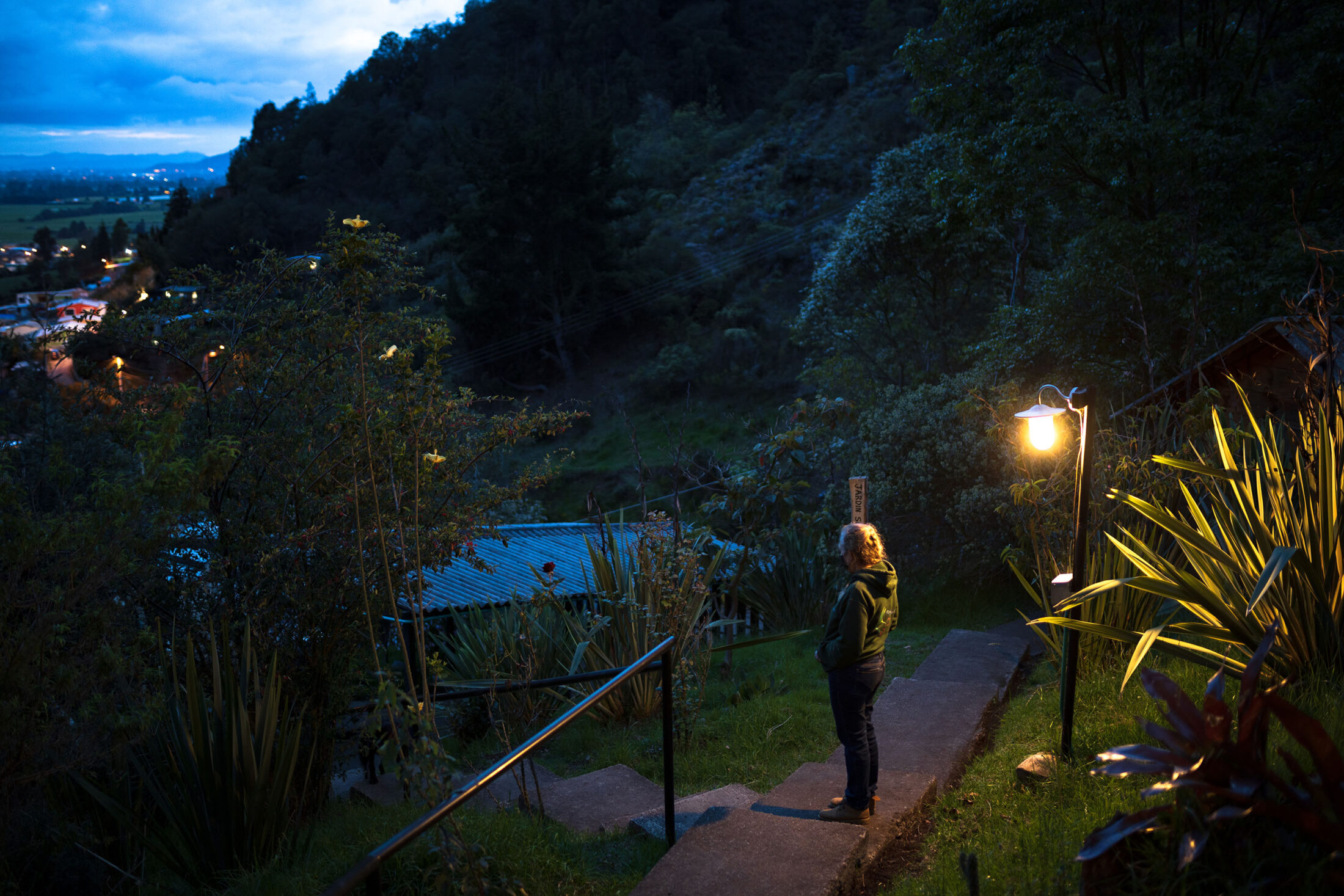
María Luisa waits for her husband at dusk as he returns from the town.
- Emily Dickinson, Poems, F 31. 1858.
- “As I dig for wild orchids,” by Izumi Shikibu, translation (c) 1988 Jane Hirshfield; from The Ink Dark Moon, translated by Jane Hirshfield with Mariko Aratani (NY: Vintage Classics, 1990); used by permission of Jane Hirshfield, all rights reserved.
